How Hard Can You Hit a Tennis Ball?

Unfortunately, this is not just a poll asking each of you for the fastest serve you've ever clocked. I understand your disappointment; I also eagerly jump at any opportunity to discuss personal achievements. Everyone likes to talk about themselves!
As I mentioned in my last post, I've shifted my focus from hitting heavy spin to deep, fast-paced balls. Several questions have surfaced while working on this goal. Why did that ball go in but the others hit the back fence? Can I hit the ball without putting any upward direction on it? If so, from how deep in the court can I do it?
So, as I wrote earlier, I am not concerned with how hard I or you can hit the ball. I'm concerned with the upper bounds possible for ball striking before errors are not just common, but guaranteed.
A Ball at Rest

I'll be using the above article's derived information for some of the calculations in my work, including their value for the drag coefficient of a tennis ball approximately equal to 0.5. If you're interested in explanations about the aerodynamics of ball flight and how tennis ball experiments are conducted, the article is a good read.
For this section, I'm focused on the amount of time a tennis ball takes to hit the ground if affected only by gravity. If I hit the ball with no upward or downward component on impact, how far will it travel before it hits the ground? I want to hit the ball straight for one major reason: power. Any amount of momentum transferred to the ball in the upward direction is lost power. But before I get too into the effect of hitting up on a ball, let's examine hitting it straight.
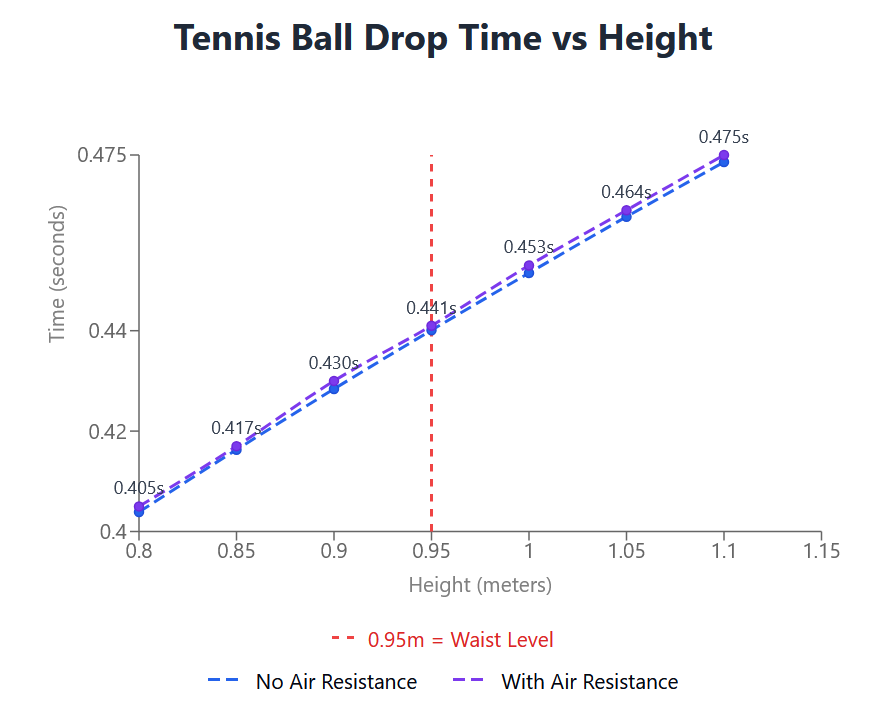
If our contact with the ball doesn't push it upwards or downwards, we can compare the amount of time a groundstroke spends in the air before bouncing to Figure I. I'm choosing to focus on groundstrokes due to the typical backspin put on volleys - increased air time - and the downward trajectory of fast-moving serves. As seen in Figure I's graph, the effect of air resistance is small, but not negligible. Air resistance will slightly increase the amount of time required for the ball to reach the ground, thus causing our ball to travel further before bouncing - leading to more out balls if left unaccounted.
I marked on the graph a typical "strike zone" at a player's waist level. Coincidentally, this is barely higher than the net's lowest point. Because of this, we'll disregard the waist-height level and any heights below it since we'd have to hit up on the ball. Our final assumption is that we are striking the ball near the baseline, giving the ball approximately 78 feet to travel before going long.
A Ball in Flight
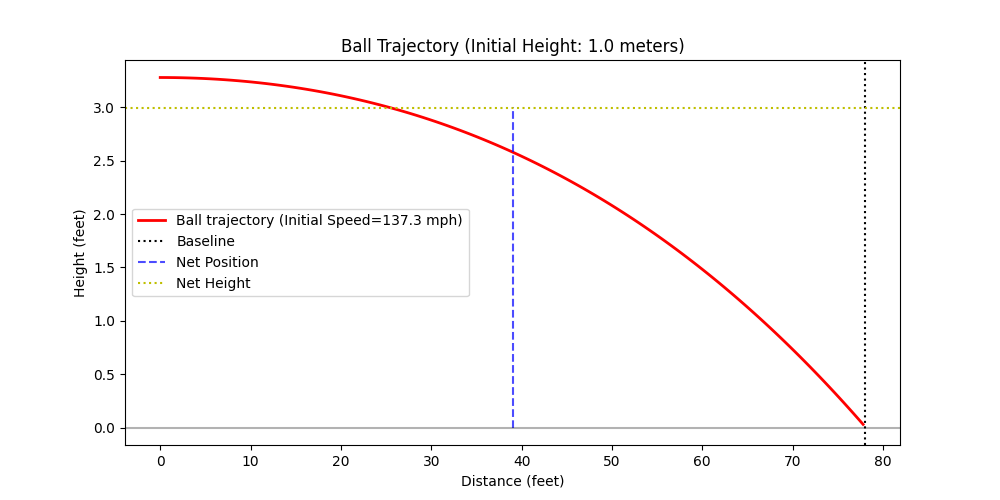
First of all, if you're cranking forehands near 140 miles per hour, please give me a call and send your address so I can see it in person. Second, as seen in Figure II, hitting a ball from our strike zone completely straight isn't feasible. The ball will either hit the net or go long. Luckily, we aren't usually trying, or even able, to hit the ball that hard. So what would our graph look like if we were able to hit the ball upwards just a little bit?
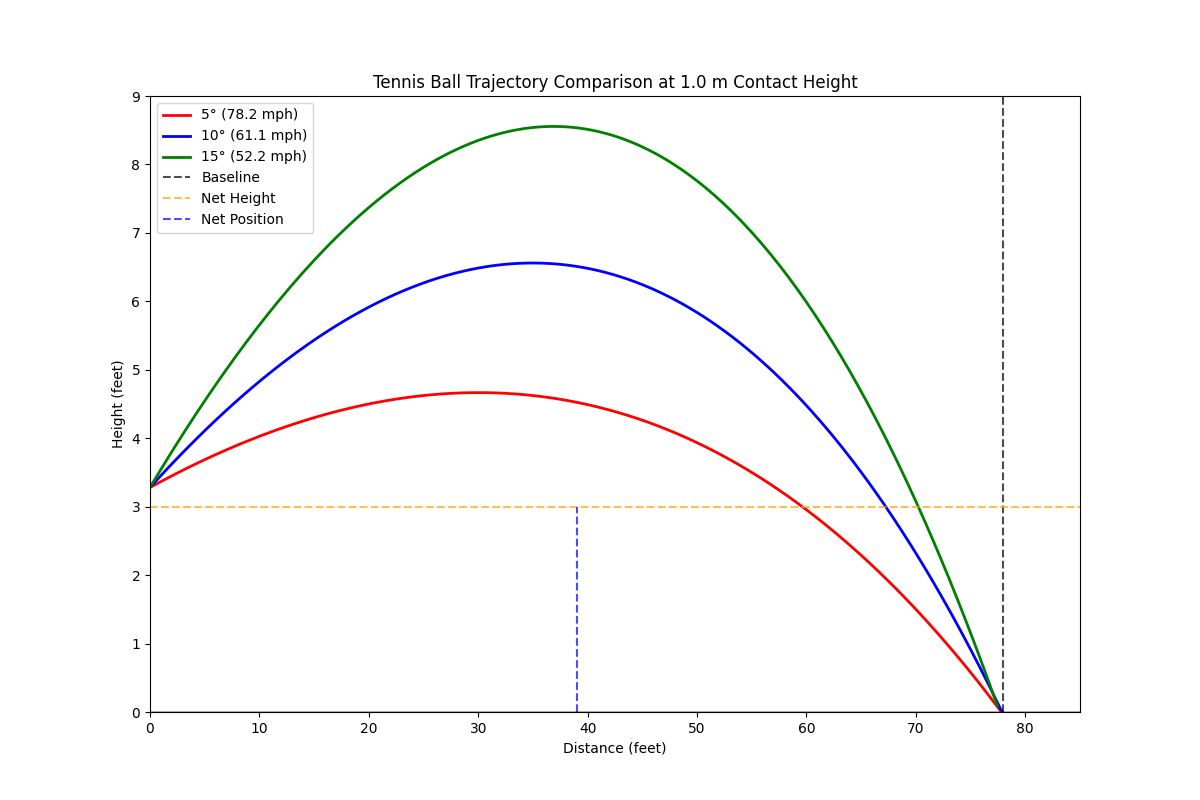
Now we have a more realistic model and look at how quickly the maximum power we can hit the ball begins to decrease. A 26-mile-per-hour difference between just 5 and 15-degree angles. Hitting upwards even a little bit drastically decreases how hard you can hit the ball. Professional players, though, regularly hit the ball much, much faster than these values. Average forehand speeds clock in above 70 mph, with some recorded speeds as high as 125. Assuming the pros are putting a good amount of upward momentum on the ball, how are they reaching these speeds without the ball going out?
The Magnus Effect
Discusses the Magnus effect in detail and provides additional explanation about the forces behind it.
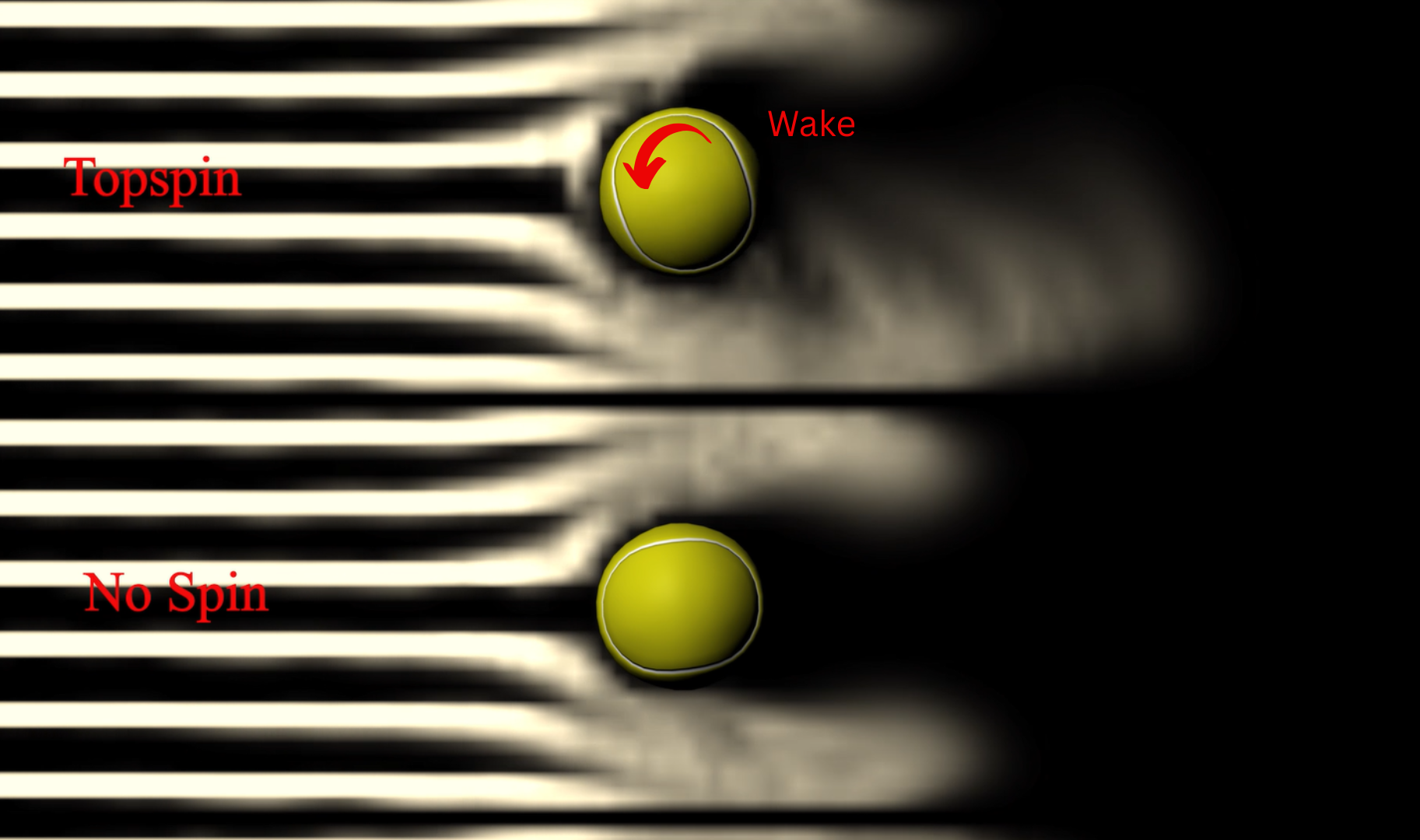
The Magnus effect refers to the forces acting on a rotating object: in our case, a tennis ball. If the rotating object creates a disturbed airfield - or wake - above and behind the object, there will be a downward force acting on it. With sufficient spin, the forces on the object from the Magnus effect alone can be huge! Surpassing even the force of gravity.
Modifying the previous trajectory simulation to calculate the maximum speed possible of a tennis ball at varying rotations per minute (RPM) resulted in the following results.
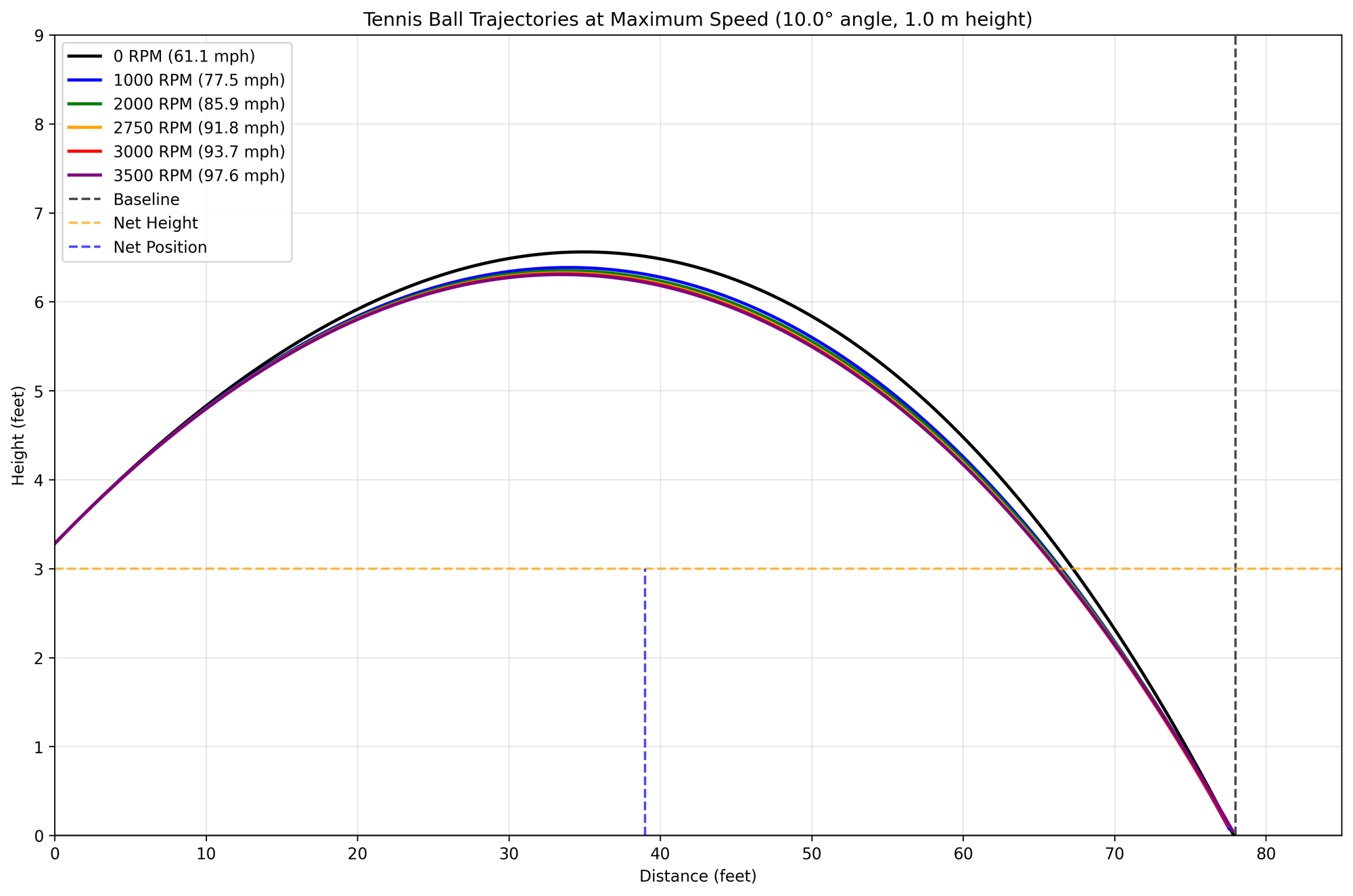
Look at those speeds! If we take the ATP tour's average around 2750 RPM, we see that even a 10° angle allows pros to top 90 mph on their groundstrokes. And that's with over three feet of net clearance.
Conclusions
How hard can you hit a tennis ball? I would say as hard as humanly possible. It would seem that physics does not define the boundaries of ball striking. Human limitations do.
While I didn't answer every question I posed to you earlier, I feel more satisfied knowing my home-run misses are due to personal errors. I hope this article helps you feel more confident hitting the ball hard; it's fun to hit hard! I will attach a link to my GitHub account where you can find the files I used to create Figures II-IV.



